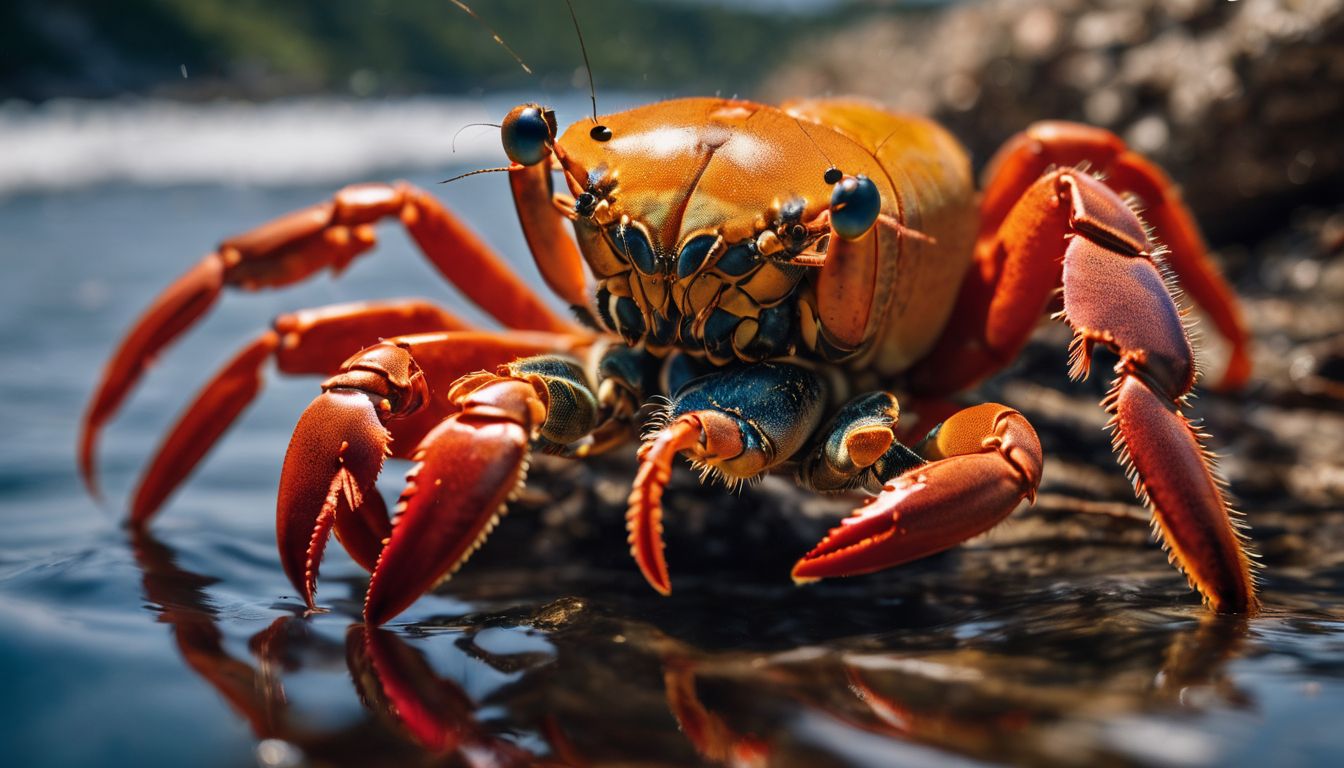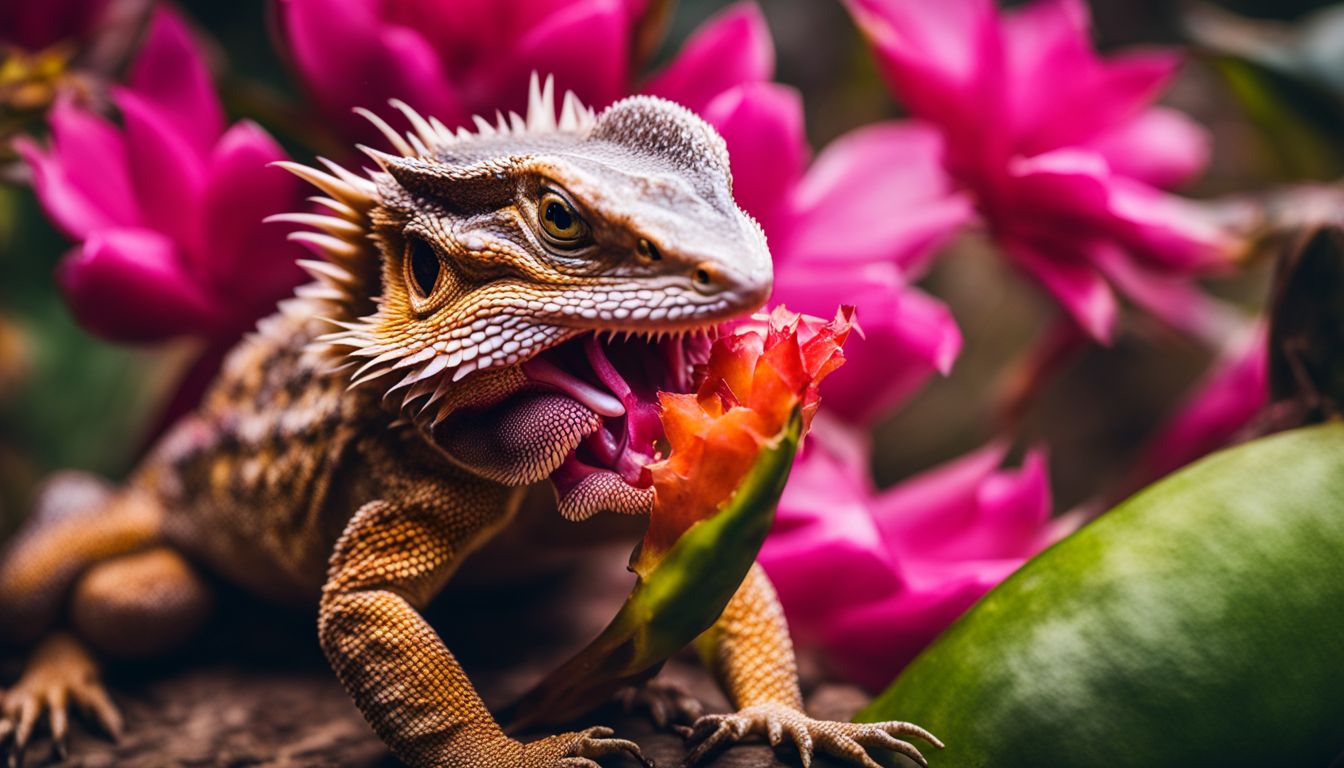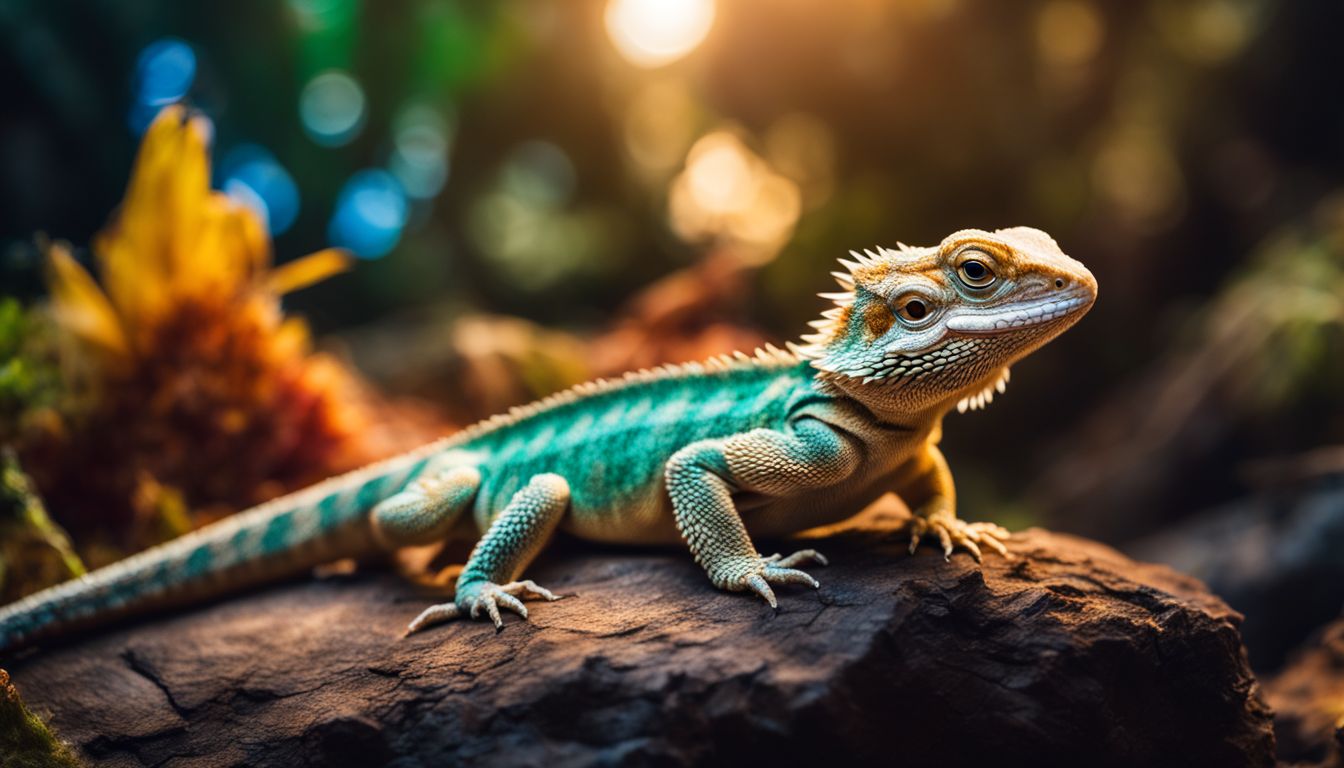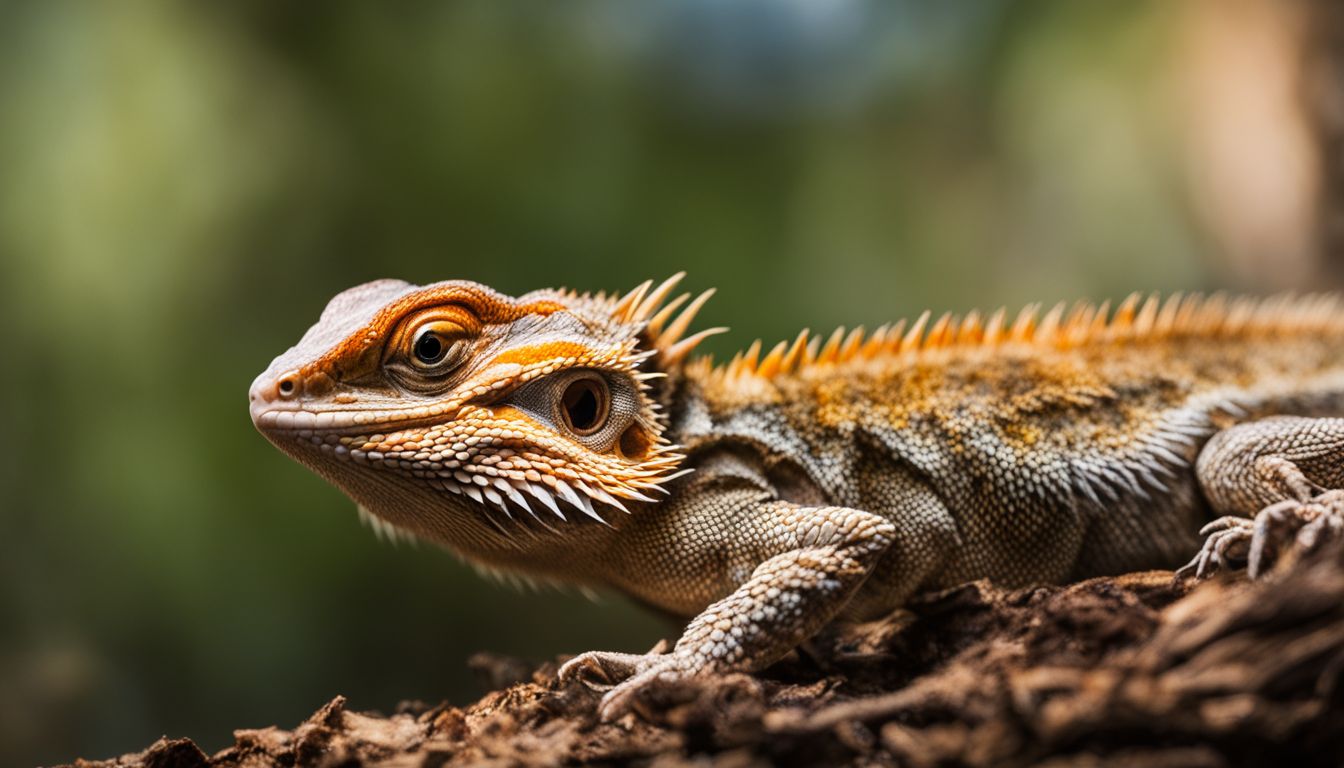Have you ever heard someone call a lobster a sea spider and wondered if that’s actually true? Believe it or not, lobsters share the same big family tree with spiders – they’re both arthropods.
Our blog post dives into this fascinating relationship to clear up confusion and reveal some surprising similarities between crustaceans like lobsters and their arachnid cousins. Let’s unravel the mystery together!
Key Takeaways
- Lobsters and arachnids, including spiders, belong to the same large group of animals called arthropods, but they are classified differently within this group.
- Despite their different classifications, lobsters and arachnids share intriguing similarities such as exoskeletons, body segmentation, jointed limbs, and bilateral symmetry. These common traits suggest a possible evolutionary connection between these two groups of creatures.
- Understanding the differences and similarities between lobsters and arachnids provides valuable insights into the diverse world of crustaceans and arachnids while highlighting nature’s intricate designs within the larger category of arthropods.
Clarifying Misconceptions: Lobsters vs. Arachnids
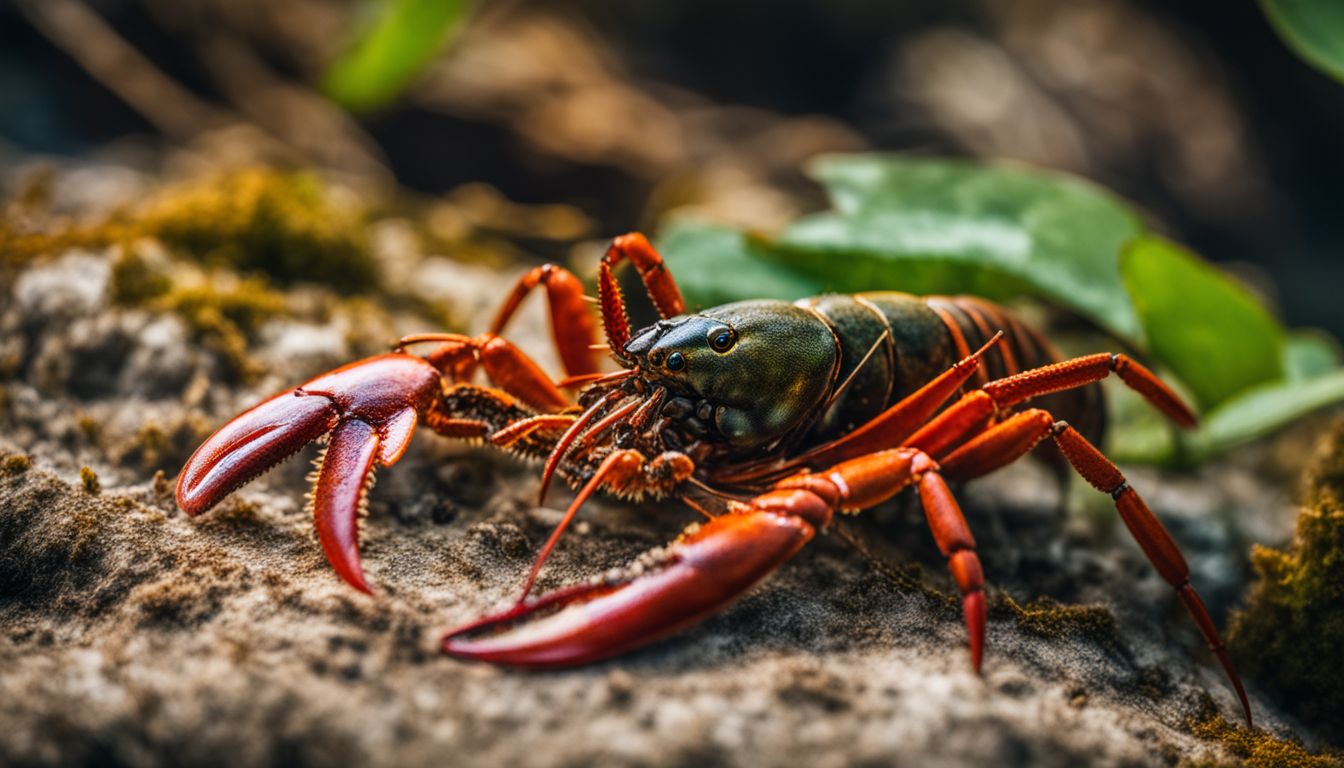
Lobsters and arachnids are often mistaken as closely related, but they are classified differently in the animal kingdom. While lobsters belong to the crustacean group, arachnids include spiders and scorpions with distinct respiratory systems and habitat preferences.
Differences in Classification
Spiders and lobsters are both arthropods, meaning they have an external skeleton and jointed legs. However, their classification within this large group is different. Spiders are part of the class Arachnida, which includes scorpions and ticks too.
Lobsters don’t join them there; they belong to the class called Malacostraca.
Malacostraca holds animals like crayfish and krill as well as lobsters. This means lobsters share more with a shrimp than with a spider. Each class has unique body features that set them apart from other family members in the phylum Arthropoda.
So even though they might look somewhat similar at first glance, on closer look you can tell they’re quite distinct creatures because of their different classes.
Distinct Respiratory Systems
Lobsters and spiders breathe in very different ways. Lobsters use gills to get oxygen from the water. These gills are like thin walls full of blood vessels, tucked under the lobster’s shell on each side of its body.
The water flows over the gills, and oxygen moves into the blood.
Spiders don’t have gills because they live on land. Many spiders have book lungs, which are stacks of soft plates that take in air. Some also use tubes called trachea to breathe. This is a big difference between lobsters and spiders.
Next, let’s look at their unique appendage structures.
Unique Appendage Structures
Lobsters sport five pairs of legs, known as pereiopods. These special legs can change a little to help the lobster do different things. For example, some can have claws for grabbing food or fighting off enemies.
On the other hand, spiders and their cousins don’t have these kinds of legs. They also don’t have feelers (antennae) or jaw-like parts (mandibles) that you see on crustaceans like lobsters.
Each part of a lobster’s body might have an appendage, which is just another name for a leg or arm. But with spiders, it’s not the same; they only have their limbs attached in one area – not all over like lobsters do.
Now let’s dive into where lobsters live and how they act!
Varying Habitats and Behaviors
Lobsters live in various habitats, including sandy and rocky shores, kelp forests, mangroves, and polar seas. They are also found in the Caribbean Sea, Gulf of Mexico, Southeast Asia, South Africa, and the Atlantic Ocean.
These marine crustaceans exhibit different behaviors based on their surroundings; for instance, they use tide pools as shelter during low tides.
Different marine ecosystems determine how lobsters behave. For example, their behavior can vary when living near prawns or hermit crabs. Furthermore, lobsters play a crucial role in maintaining the balance of the marine food chain by being important benthic predators in local ecosystems.
Uncovering Similarities: Shared Characteristics of Lobsters and Arachnids
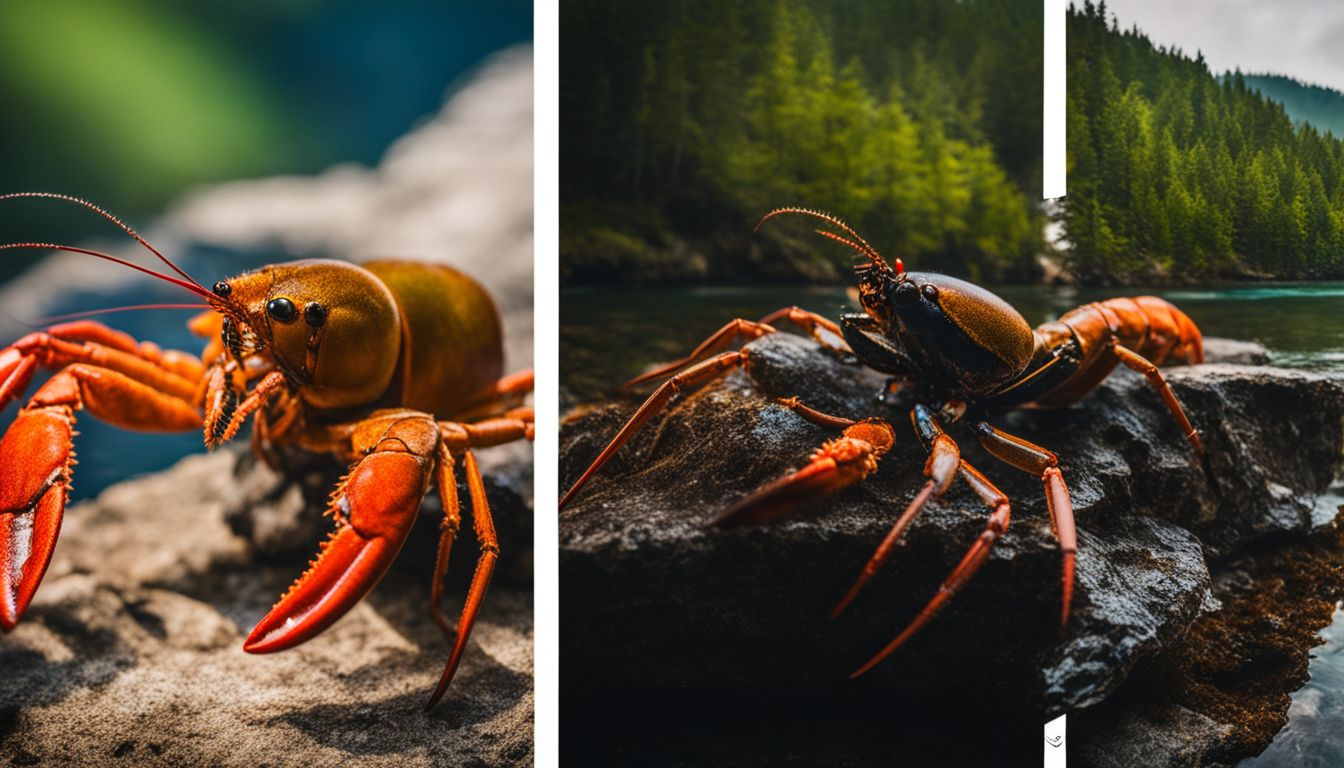
Lobsters and arachnids share key features such as exoskeletons, body segmentation, jointed limbs, and bilateral symmetry. To learn more about the fascinating relationship between these two groups of creatures, keep reading!
Exoskeletons and Body Segmentation
Lobsters and arachnids have something in common. They both have a hard outer covering, called an exoskeleton. This tough shell is made of chitin bound to protein. It’s like wearing armor for protection! Both lobsters and arachnids also have segmented bodies, with distinct sections joined by flexible joints.
These similarities in their exoskeletons and body segmentation suggest a possible evolutionary connection between these two groups of arthropods.
The jointed skeletal covering made of chitin is a key feature of lobsters and arachnids. It provides crucial support and protection for their bodies. Their segmented, jointed exoskeleton allows them to move around efficiently and protects them from harm.
Jointed Limbs and Bilateral Symmetry
Having discussed the exoskeletons and body segmentation of arthropods, it’s worth noting that all arthropods, including lobsters and arachnids, possess jointed limbs and bilateral symmetry.
This means that their bodies are divided into similar halves on either side. Arthropods control their limbs by contracting muscles connected to their exoskeleton on both sides of the joint.
The bilateral symmetry of lobsters and arachnids means that the right half of their bodies is the mirror image of their left half.
The Arthropod Family Tree: Understanding Lobsters’ Place
Lobsters are classified as crustaceans, a group within the broader phylum of arthropods, which also includes insects and spiders. To better understand their place in the arthropod family tree, let’s explore their unique characteristics and evolutionary history! Read on to uncover more fascinating facts about lobsters and their relationship with other arachnids and crustaceans.
Lobsters as Crustaceans
Lobsters are a type of crustacean, which means they belong to a group of animals that have hard exoskeletons and jointed legs. Crustaceans also include creatures like crabs, shrimp, and barnacles.
They can be found in oceans or freshwater environments. Lobsters are part of the decapod family, grouped with other animals like crabs and shrimp due to their ten legs.
Decapods have three main body parts: the head, thorax, and abdomen. And just like other crustaceans, lobsters molt as they grow – shedding their exoskeleton and growing a new one several times throughout their lives.
This process allows them to increase in size and makes it easier for them to move around comfortably. That’s why when you see a lobster without its shell (also known as “soft-shelled“), it means it has recently molted! These fascinating creatures play an essential role in marine ecosystems due to their presence at various food web levels.
The Broader Arthropod Phylum
The arthropod phylum is a group of animals with jointed legs and hard outer skeletons. This phylum includes crustaceans, such as lobsters and crabs, as well as arachnids like spiders and scorpions.
It also encompasses insects like ants and butterflies. Arthropods live in various habitats, from the depths of the ocean to the forests on land. They play an essential role in ecosystems as they contribute to processes like pollination and decomposition.
Arthropods are divided into four major subphyla: Chelicerata (which includes spiders), Crustacea (including lobsters), Uniramia (like millipedes), and Hexapoda (insects). Each subphylum has unique characteristics that make them distinct from one another.
Fascinating Facts About Lobsters
Lobsters can change color during cooking and they are not actually immortal. There’s so much more to uncover about these fascinating creatures, so keep reading to learn more!
Color Changes During Cooking
Lobsters can change color due to a special pigment called astaxanthin, which is found naturally. When lobsters are cooked, they turn bright red due to a precise explanation for the color change from blue/black to red.
The astaxanthin pigment in the lobster’s shell gets altered during cooking, leading to this striking color transformation. This process does not only affect its appearance but also indicates when the lobster is perfectly cooked and safe to eat.
The Myth of Lobster Immortality
Lobsters are not immortal, despite what some people believe. They continue to eat, reproduce, and grow throughout their lives but they do have an end – they are not immortal creatures.
There’s a lot of talk about how long lobsters can live and whether they’re really immortal.
Moving on to fascinating facts about lobsters..
Conclusion
In conclusion, understanding the differences and similarities between lobsters and arachnids sheds light on their fascinating evolutionary paths within the arthropod group. While lobsters are not spiders, they share intriguing characteristics that connect them to other arachnids in surprising ways.
Exploring this relationship offers valuable insights into the diverse and complex world of crustaceans and arachnids, highlighting the wonders of nature’s intricate designs. We continue to unravel the mysteries of these remarkable creatures, showcasing the endless marvels waiting to be discovered beneath the waves.
FAQs
1. Are lobsters and spiders related?
Yes, both lobsters and spiders are part of the big family called arthropods. They share features like a hard outer skeleton and jointed legs.
2. How can we tell if an animal is a crustacean or an arachnid?
Crustaceans, like lobsters and fiddler crabs, usually live in water, have gills for breathing, and two main parts to their bodies plus lots of legs. Arachnids, like tarantulas and scorpions, have eight legs, live mostly on land or in water but not underwater as most crustaceans do.
3. Do lobsters have good eyesight like some spiders?
No! Lobsters don’t see very well compared to some spiders that hunt prey. Spiny lobsters even use feelers to sense their way around because their eyes are pretty simple.
4. What’s similar about how spiders and lobsters move?
Both creatures walk using many legs—spiders have eight walking legs while clawed lobster has ten!
5. Can you find both spiders and lobysters near shoreline areas?
Yes! Some types of these animals might be seen near shores where the land meets the sea—like hermit crabs on beaches or certain small spider species among plants along the shoreline.
6. How do different kinds of these animals breathe?
Lobster breathe with gills in water while most spiders take air directly through special body parts known as book lungs or tiny holes called spiracles when on land.

